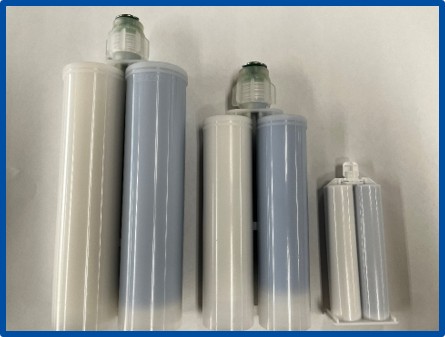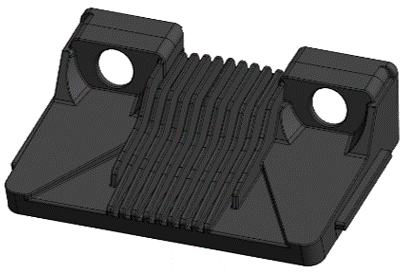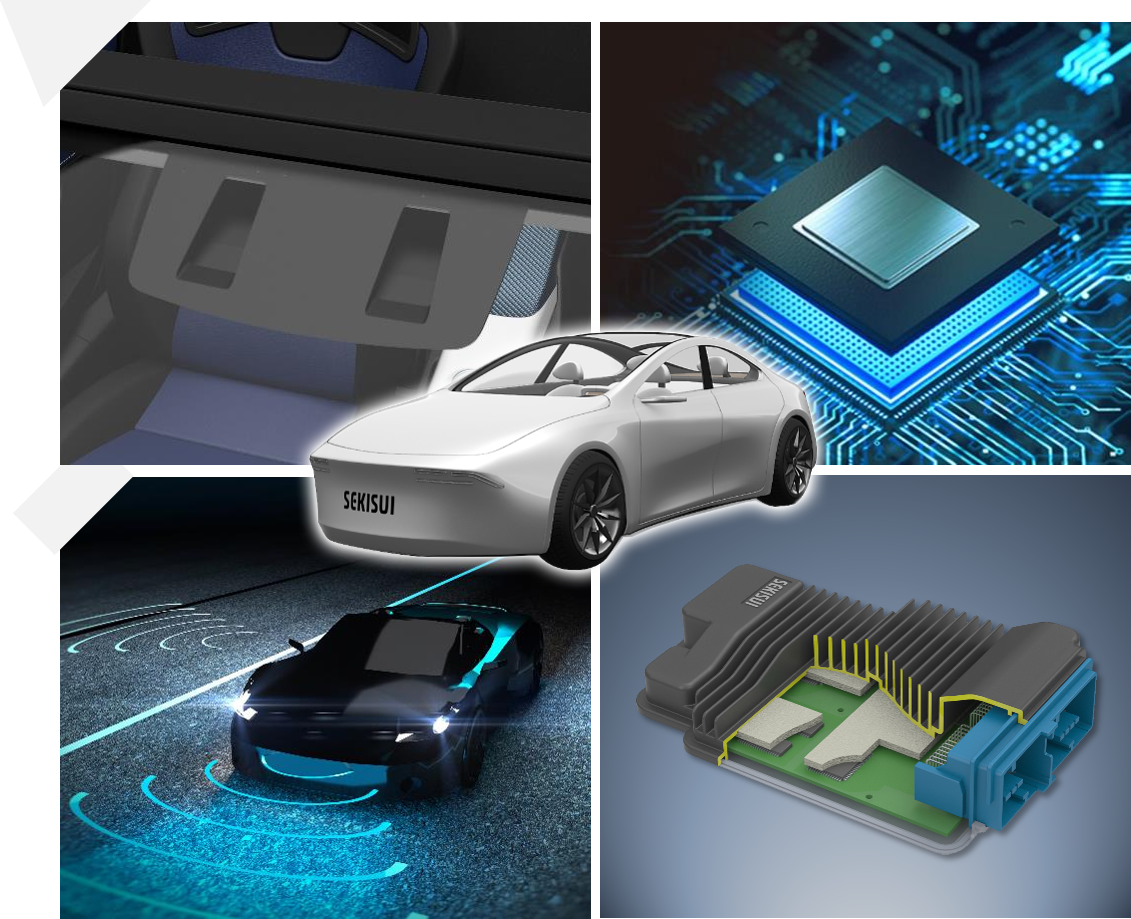What is ADAS (Advanced Driver Assistance Systems)?
- Mobility
- Product introduction

Basic Concept and Necessity of ADAS
What is ADAS?
ADAS stands for Advanced Driver Assistance Systems. These systems are designed to enhance vehicle safety and improve the driving experience by using a combination of sensors, cameras, radar, and other technologies to monitor the vehicle's surroundings. ADAS can provide warnings to the driver and, in some cases, take control of the vehicle to prevent accidents.
Why Do We Need ADAS?
Driving inherently involves risks, especially in complex environments such as urban areas, highways, and during adverse weather conditions. ADAS helps mitigate these risks by providing early warnings and automated responses to potential hazards. This is particularly important in reducing traffic accidents, alleviating driver fatigue, and enhancing overall road safety. The increasing number of elderly drivers and the growing complexity of traffic environments further underscore the need for such systems.
▶Related Products:Millimeter wave absorbing sheet - masa sorb -

Utilizing advanced sputtering technology, our lightweight, thin, and highly durable millimeter wave absorbing sheet offers robust electromagnetic wave mitigation, ensuring optimal performance and reliability in automotive applications.
Key Functions of ADAS
Examples of ADAS Functions:
Lane Departure Warning (LDW):
This system alerts the driver if the vehicle begins to drift out of its lane without signaling. It uses cameras to monitor lane markings and can provide visual, auditory, or haptic feedback.
Example: If a driver is drowsy and the vehicle starts to veer off the road, LDW will issue a warning.
Advanced Emergency Braking (AEB):
AEB systems detect imminent collisions with other vehicles or obstacles and automatically apply the brakes to prevent or mitigate the impact.
Example: If a pedestrian suddenly crosses the road, AEB can stop the car to avoid a collision.
Adaptive Cruise Control (ACC):
ACC maintains a set speed and adjusts the vehicle's speed to keep a safe distance from the car ahead. It uses radar and sometimes cameras to monitor traffic conditions.
Example: If the car in front slows down, ACC will reduce your speed accordingly and accelerate back to the set speed when the road is clear.
Driver Monitoring System (DM):
This system uses cameras to monitor the driver's face and eye movements to detect signs of fatigue or distraction. It can issue alerts to keep the driver attentive.
Example: If the driver starts to nod off, DM will sound an alarm to wake them up.
Forward Collision Warning (FCW):
FCW systems use sensors to detect potential collisions with vehicles or obstacles ahead and warn the driver to take action.
Example: If the car in front stops suddenly, FCW will alert the driver to brake.
Night Vision/Pedestrian Detection (NV/PD):
These systems use infrared cameras to detect pedestrians and animals in low visibility conditions, such as at night or in fog, and provide warnings to the driver.
Example: If a pedestrian is walking on the road at night, NV/PD will alert the driver.
Traffic Sign Recognition (TSR):
TSR uses cameras to read road signs and display them to the driver, ensuring that important signs are not missed.
Example: If there's a speed limit sign, TSR will display the limit on the dashboard.
Lane Keeping Assist System (LKAS):
LKAS helps keep the vehicle centered in its lane by providing gentle steering inputs. It works in conjunction with LDW.
Example: If the vehicle starts to drift out of its lane, LKAS will steer it back.
Blind Spot Monitoring (BSM):
BSM uses sensors to detect vehicles in the driver's blind spots and provides warnings to prevent lane-change collisions.
Example: If there's a car in your blind spot when you're changing lanes, BSM will alert you.
Adaptive Front Lighting System (AFS):
AFS adjusts the direction and range of the headlights based on the vehicle's speed, steering angle, and road conditions to improve visibility.
Example: When driving around a curve, AFS will adjust the headlights to illuminate the road ahead.
Advanced Parking Assist (APA):
APA helps with parking by detecting suitable parking spaces and automatically steering the vehicle into the space.
Example: If you're parallel parking, APA can take over and park the car for you.
▶Related Products:Thermal-conductive greases CGW series

Excellent conformity to uneven surfaces, outstanding stability, flexible, and highly adhesive. High-performance thermal grease that meets diverse needs.
Technologies Behind ADAS
Key Technologies:
In ADAS, sensor technologies such as cameras, radar, and LiDAR are used. These sensors capture real-time information about the surroundings of the vehicle, collect data, and support the vehicle in driving safely.
Cameras:
Cameras capture high-resolution images of the vehicle's surroundings, which are used for object detection, lane recognition, and traffic sign recognition.
Radar:
Radar systems emit radio waves that reflect off objects to measure their distance, speed, and relative position. This is crucial for functions like ACC and AEB.
LiDAR (Light Detection and Ranging):
LiDAR uses laser pulses to create detailed 3D maps of the environment, providing precise information about the shape and distance of objects.
▶Related Products:Injection molding with thermal-conductive and EMC shielding

Achieving heat dissipation, electromagnetic wave shielding, and weight reduction all at once. Shielding resin molded products for next-generation ECU housings.
Machine Learning and ADAS:
The data collected by sensors and cameras is processed using machine learning algorithms and AI. These technologies enable the vehicle to interpret complex environments, recognize patterns, and make real-time decisions. For example, machine learning can improve the accuracy of pedestrian detection by analyzing vast amounts of image data.
OTA (Over-The-Air) Updates:
OTA updates allow vehicle software to be updated remotely via wireless communication. This ensures that ADAS features can be improved and new functionalities can be added without requiring a visit to the dealership, similar to how smartphones receive software updates.
Video and Vehicle Data Analysis Technology and Its Applications
Video and vehicle data analysis technology analyzes the images and data collected by the vehicle, supporting driving assistance and understanding the vehicle's condition. For example, it can provide alerts and driving assistance tailored to the driver's driving tendencies.
ADAS and Autonomous Driving
Difference Between ADAS and Autonomous Driving:
ADAS: These systems assist the driver by providing warnings and taking control in specific situations, but the driver remains responsible for driving.
Autonomous Driving: In fully autonomous systems, the vehicle can drive itself without human intervention. Autonomous driving is categorized into levels from 0 to 5, with Level 5 being full automation.
Levels of Autonomous Driving and the Relationship with ADAS
Autonomous driving has levels ranging from 0 to 5. Level 0 is where the driver performs all operations, while Level 5 is full autonomous driving. ADAS mainly provides functions from Level 1 to Level 3, supporting the driver.
| Level | Category | Description | Driving Entity | |
|---|---|---|---|---|
| 0 | No automation | The driver performs all tasks. | Driver | |
| 1 | ADAS | Driver Assistance | The system assists with specific tasks like steering or acceleration. | Driver |
| 2 | Partial Automation | The system can control both steering and acceleration/deceleration, but the driver must remain engaged. | Driver | |
| 3 | Conditional Automation | The system can handle all driving tasks under certain conditions, but the driver must be ready to take over. | System | |
| 4 | AD | High Automation | The system can perform all driving tasks in most conditions without driver intervention. | System |
| 5 | Full Automation | The system can drive the vehicle in all conditions without any human input. | System |
ADAS in Japan
Current Status:
In Japan, many new vehicles are equipped with ADAS features. These technologies are becoming standard, especially in higher-end models. The market for ADAS-equipped vehicles is growing, driven by the need for enhanced safety and the increasing number of elderly drivers.
Major ADAS Manufacturers in Japan and Their Technologies
Major Japanese automobile manufacturers are developing and providing world-class ADAS technology. Utilizing advanced sensor technology and AI technology, they offer safe and comfortable driving experiences.
- Toyota Motor Corporation:Toyota Safety Sense
- Nissan Motor Co., Ltd.:ProPILOT
- Honda Motor Co., Ltd.:Honda SENSING
- SUBARU Corporation:EyeSight
The technologies of these manufacturers contribute to reducing traffic accidents and alleviating driver burden, driving the evolution of autonomous driving technology.
Future ADAS Technology and Evolution Direction
ADAS technology is evolving daily, with new functions being added through the latest research and development. For example, more advanced autonomous driving functions and features that monitor the driver's health are being developed.
Expected New Technologies and ADAS Trends
With the advancement of AI (Artificial Intelligence), vehicles will be able to more accurately judge the surrounding situation and perform appropriate driving operations. Additionally, the evolution of sensor technology will enable detailed detection of surrounding objects and obstacles, significantly improving safety. Furthermore, the spread of 5G communication will enable real-time information communication between vehicles, signals, traffic congestion, and other infrastructure, promoting traffic efficiency. These technological advancements will make future vehicles a safer and more convenient means of transportation for people of all ages, significantly changing our lives.
▶Related Products:Thermal-Conductive Sheets TIMLIGHT Insulation Series

Reducing the load on heat-generating components and enclosures. Also effective in absorbing electromagnetic waves! Heat dissipation sheets with heat resistance and electrical insulation properties.
Solutions and Products for ADAS Development
Products and Technologies Supporting ADAS Development
Sekisui Chemical Group provides bonding, heat dissipation, and molding technologies and products to enhance vehicle safety and performance. These include materials that improve the accuracy of ADAS systems.
- Technology for improving the detection accuracy of in-vehicle cameras and millimeter-wave radar.
- Cooling materials for high-temperature CPUs and GPUs
- Materials to prevent malfunction of devices due to electromagnetic noise
- Molded products with both heat dissipation and electromagnetic wave shielding properties
- Technology to control gaps in thin printed circuit boards using functional fine particle technology
- Sealing materials using bonding technology
These materials contribute to the longevity and stable operation of devices, improving the reliability of ADAS devices and contributing to the environment. We will continue to monitor technological innovations and market trends, contributing to the design and development of next-generation models.
Contact us
Sekisui Chemical Co., Ltd.
High-Performance Plastics Company Mobility Business Strategy Department
Or, please use the "Contact" button on the site.
Reference Materials and Public Institution Data
Ministry of Land, Infrastructure, Transport and Tourism "Latest Trends in ADAS Technology and Autonomous Driving" https://www.mlit.go.jp
NHTSA (National Highway Traffic Safety Administration) "Safety and Regulation of Advanced Driver Assistance Systems (ADAS)" https://www.nhtsa.gov
Euro NCAP (European New Car Assessment Programme) "ADAS Functions and Vehicle Safety Standards" https://www.euroncap.com

